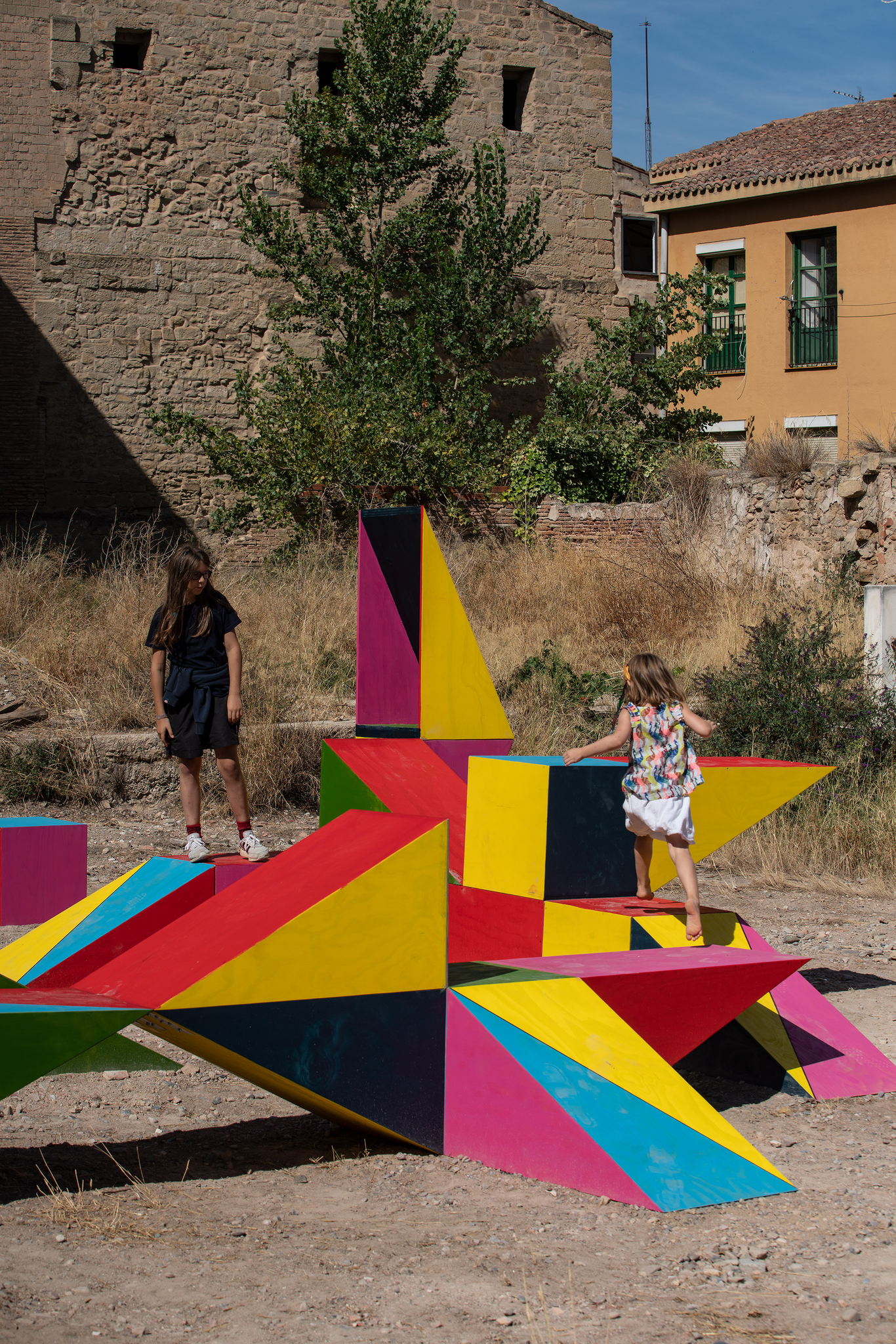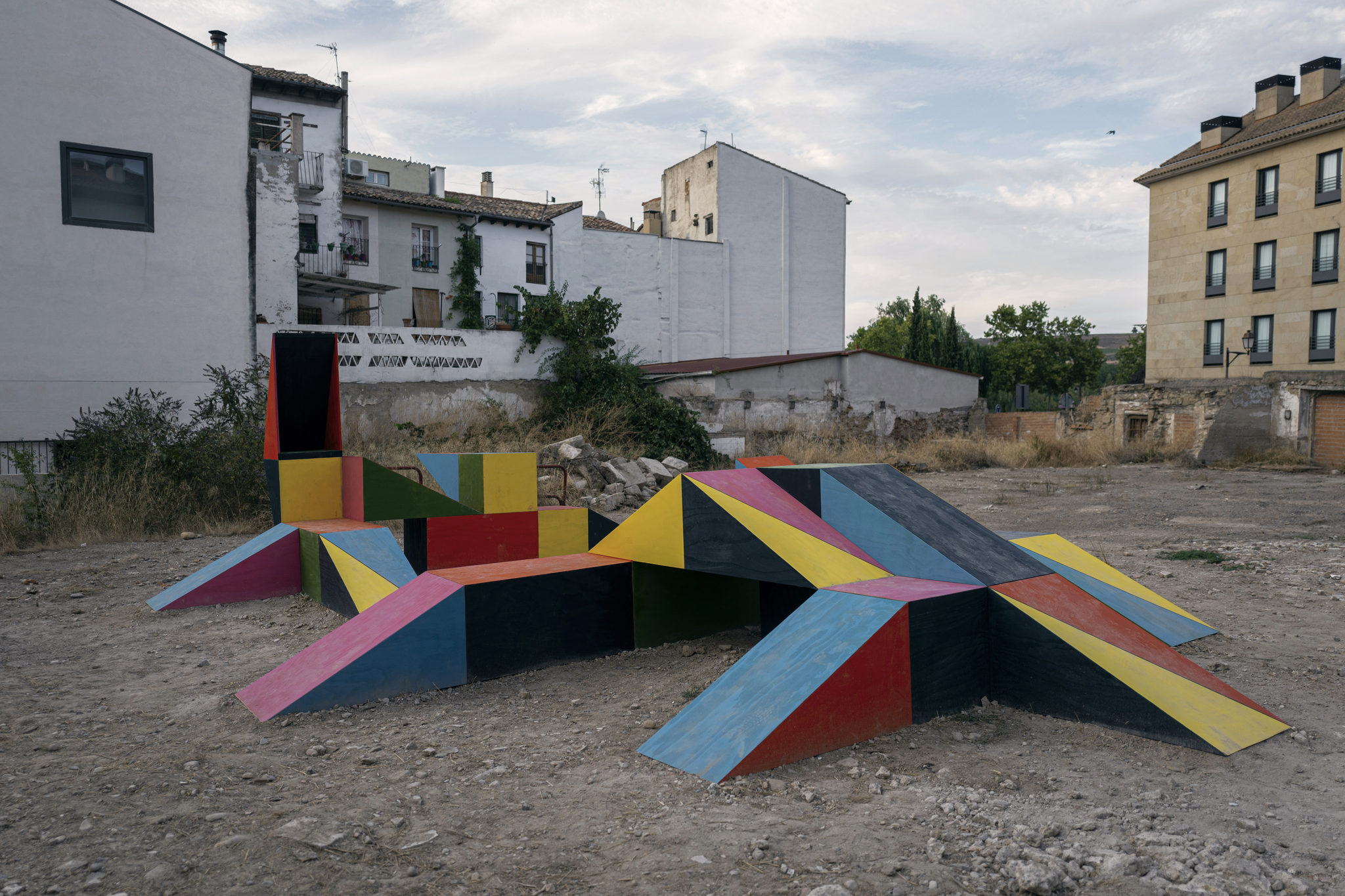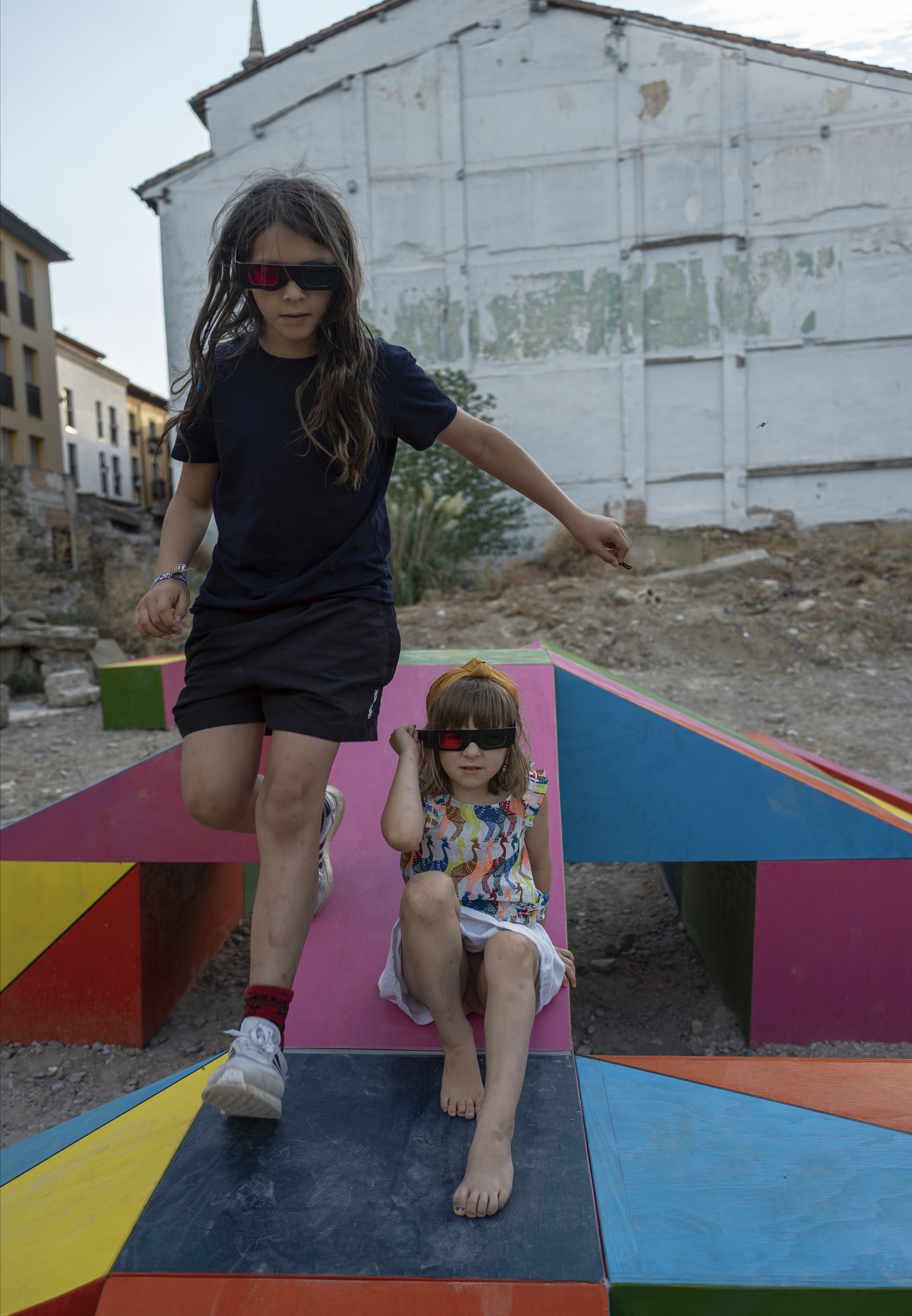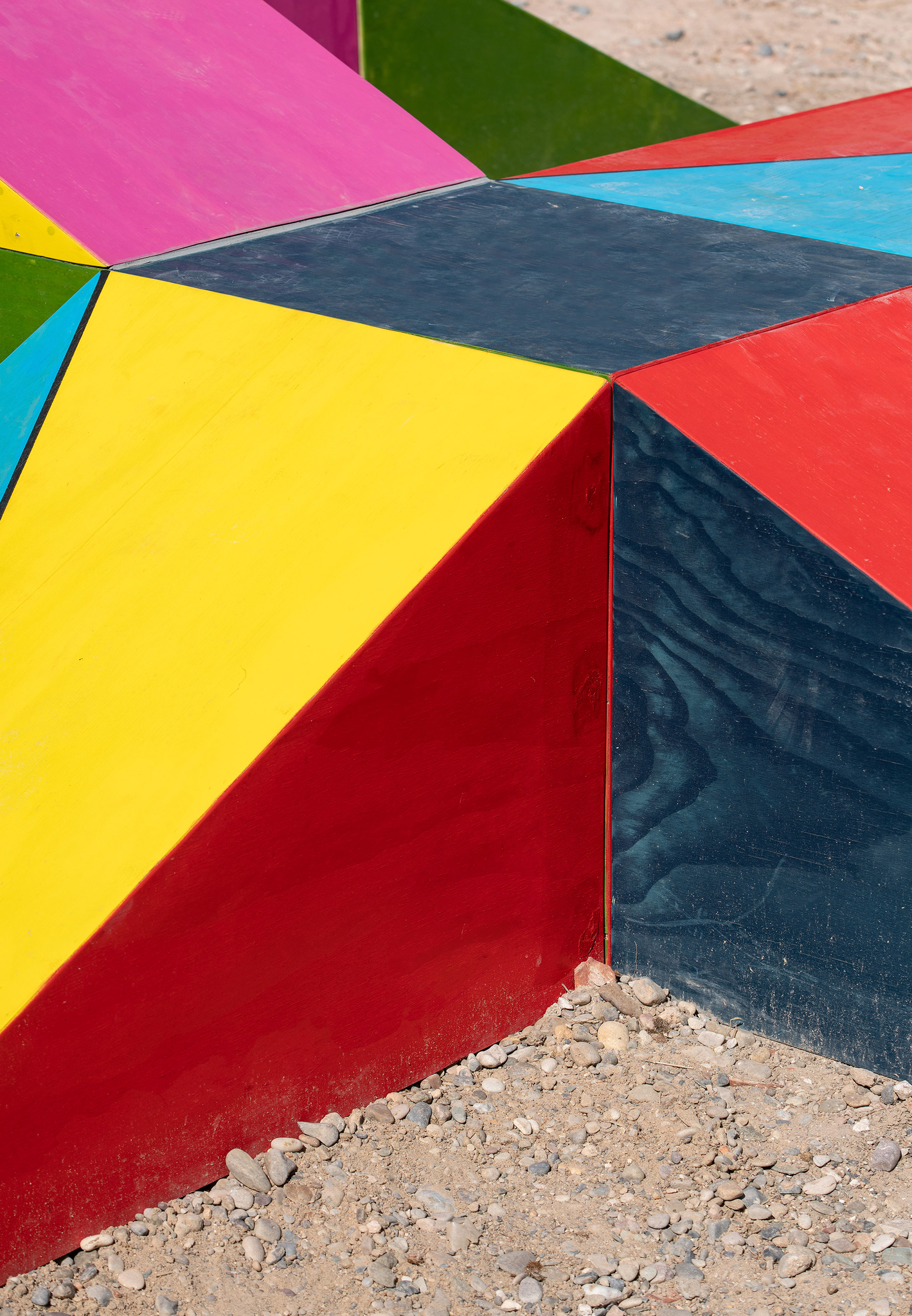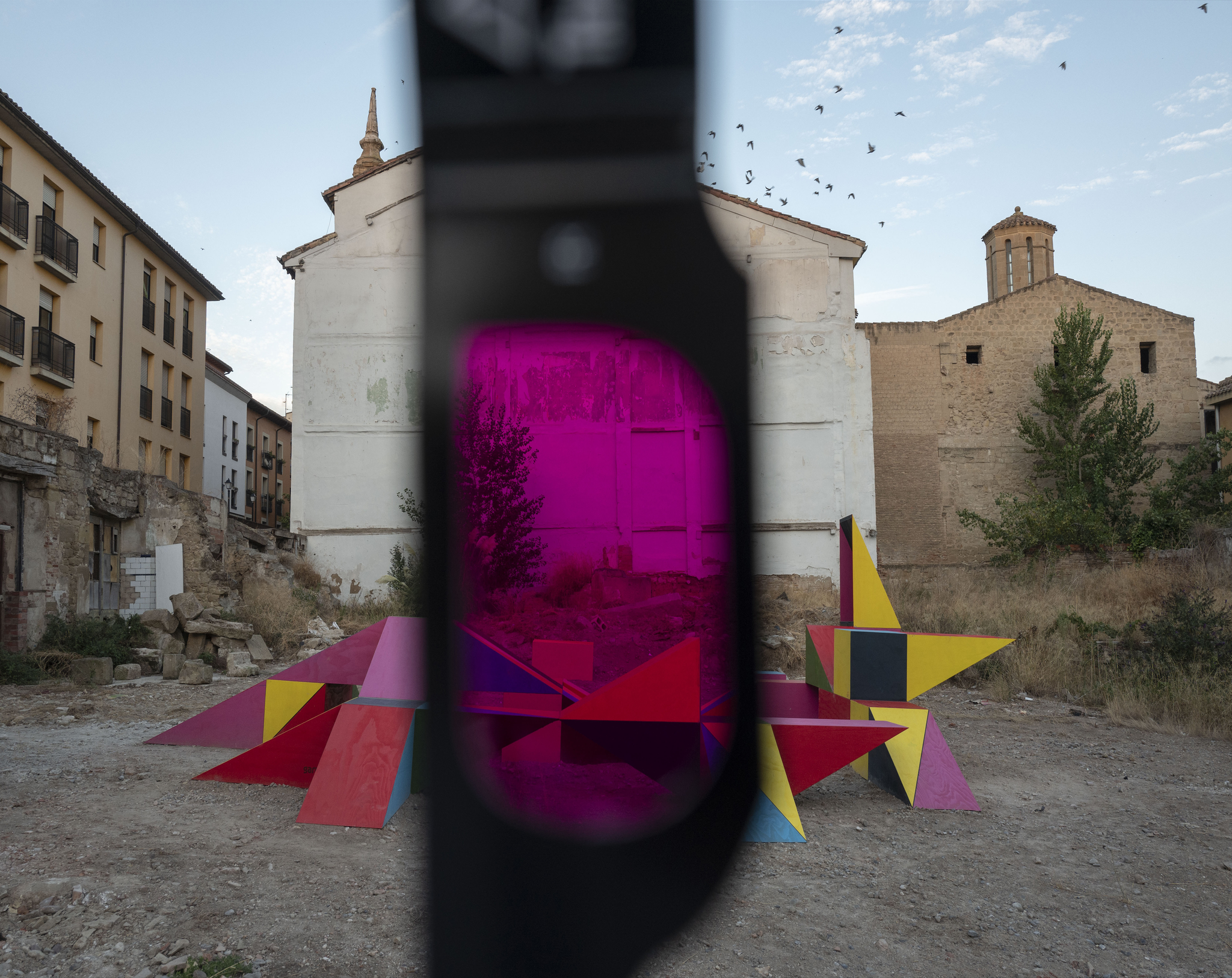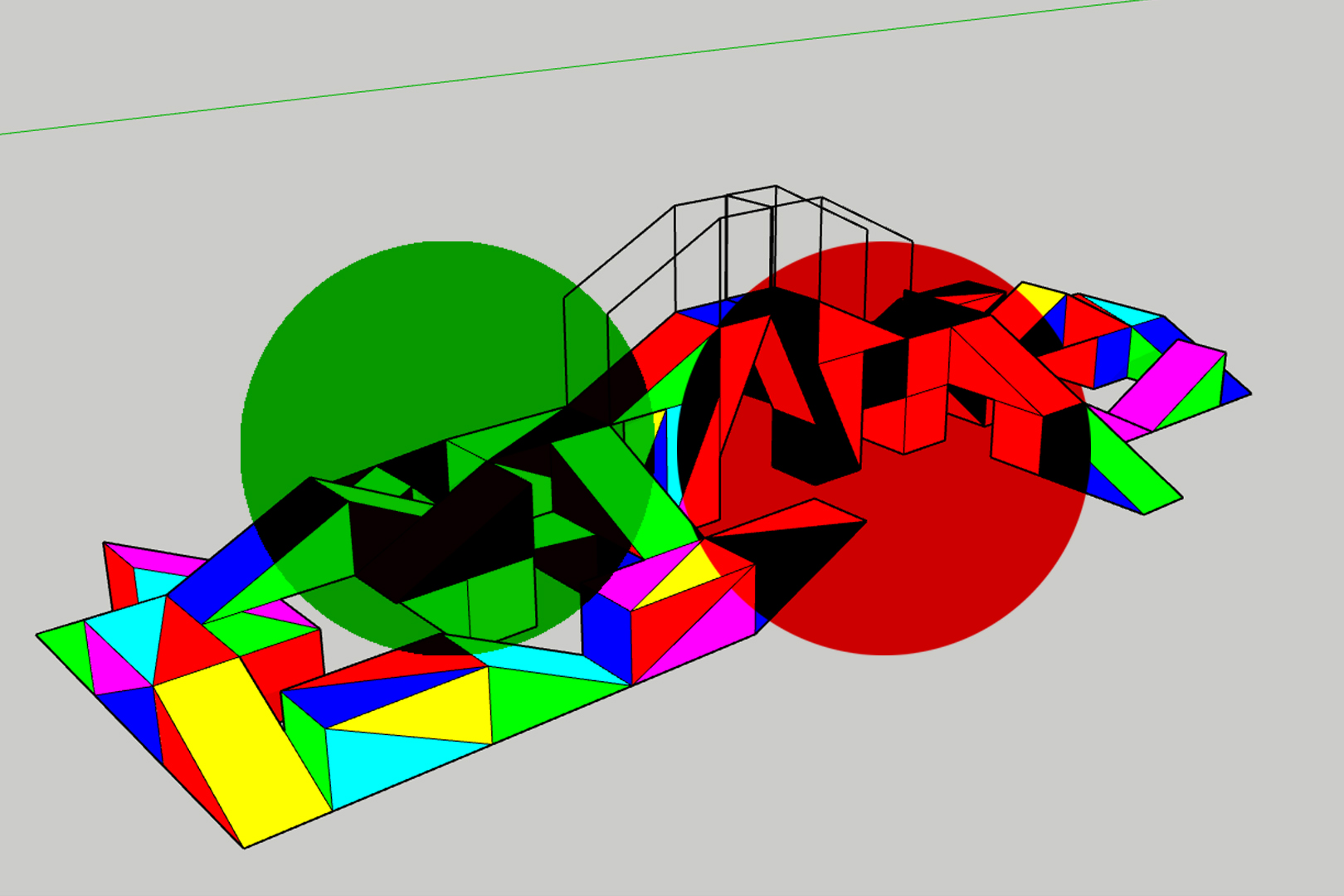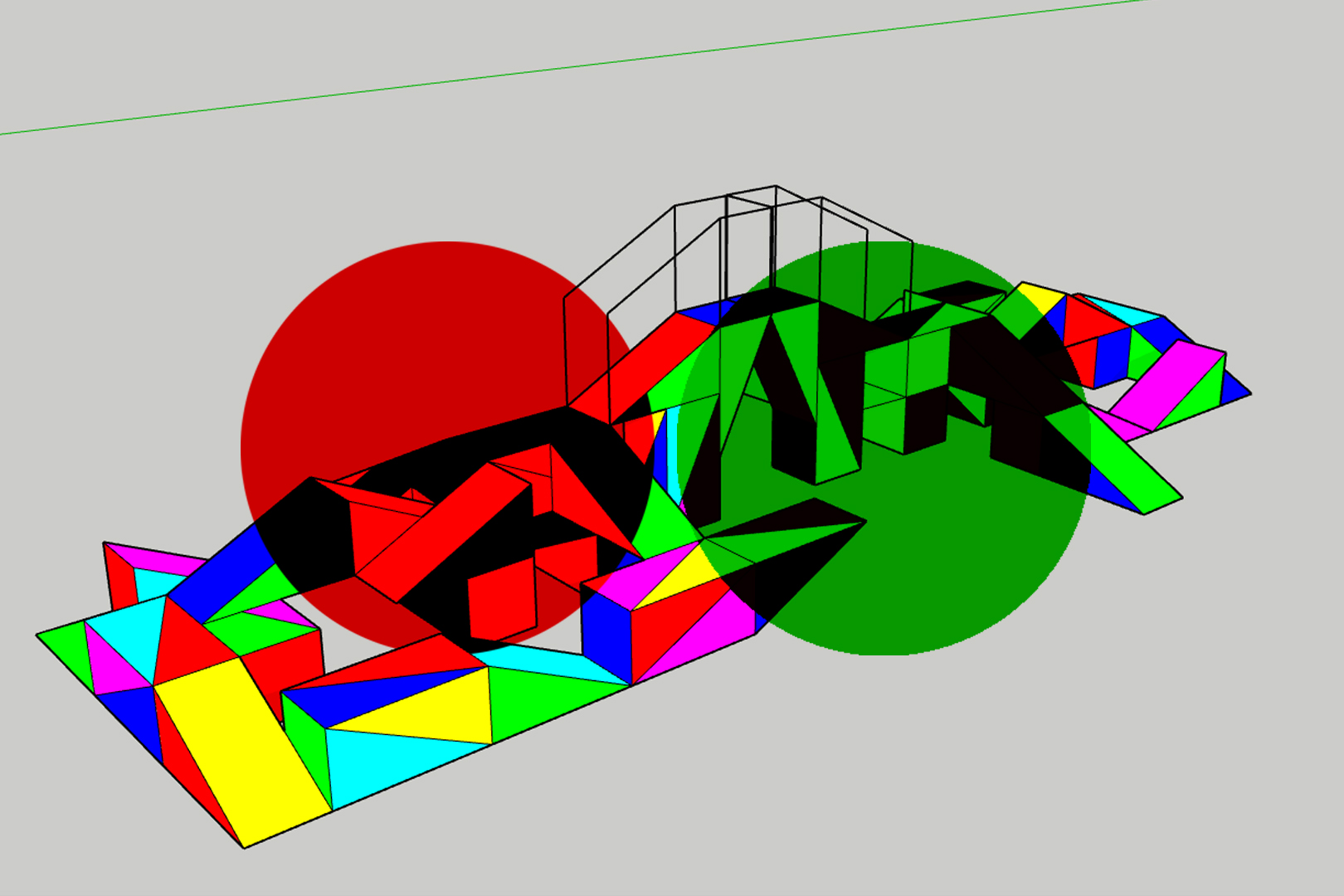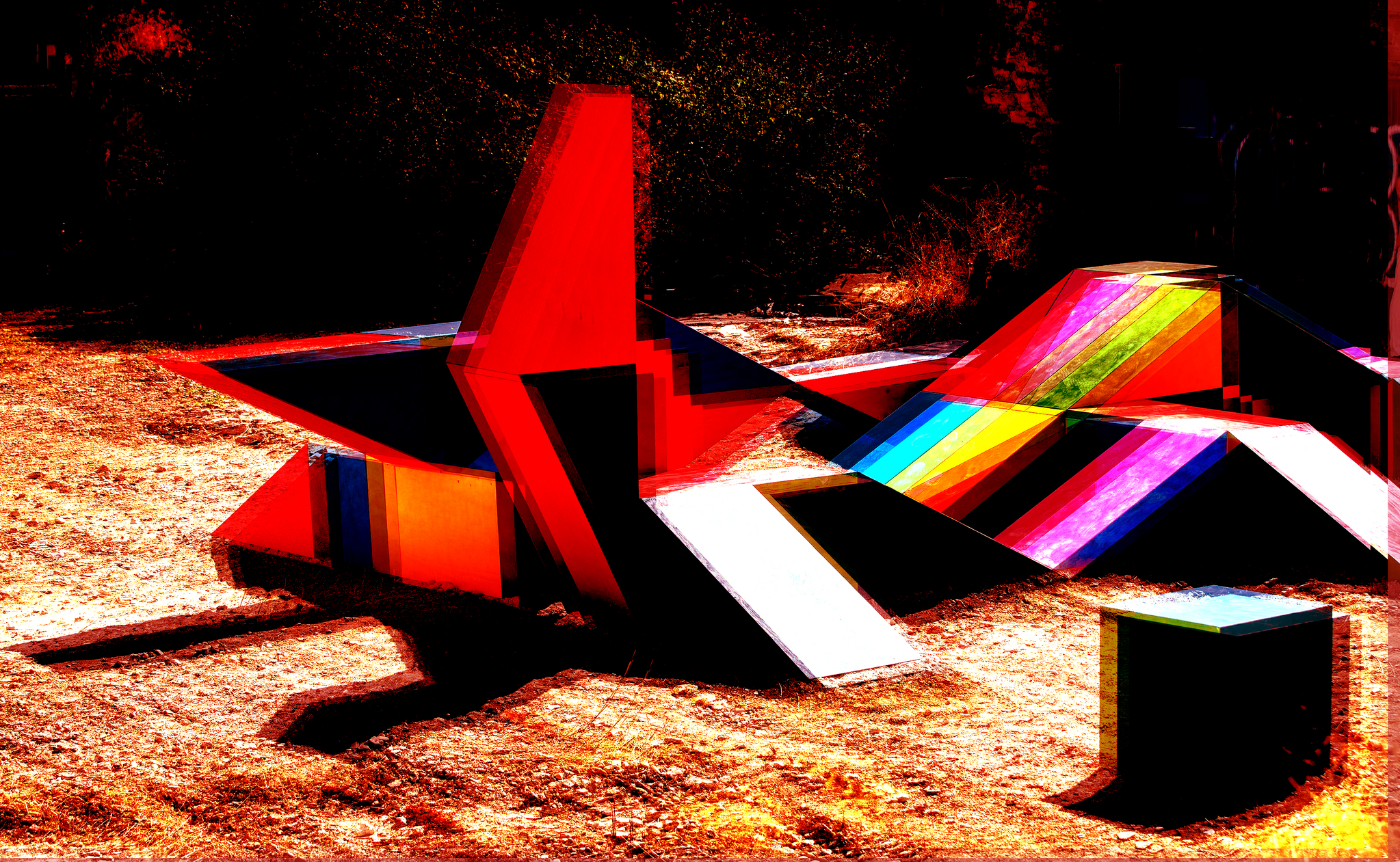In the design for the PRIOR experimental instalation, we loosely connect observations from neuroscientific disciplines in the practice of designing play installations. The spatial layout is conceived with the targeted intention of stimulating different functions of the human physical and mental apparatus. The combination of optic and haptic sensations in a parallel scenario conveys the visitor, the participant, into an unusual situation. The result of the stimulation is a disruptive reaction, which initiates the organism’s adaptation process. Adaptation is a key mechanism that connects play, learning, and the perception of a work of art.
The experimental model of the PRIOR play element assumes the difficulty of moving on terrain with a significant division of the terrain, in our case along a set of inclined planes. The inclined plane here represents the basic play element. The color pattern on the element has nothing to do with the logic of the terrain difference. The color pattern is not the key to understanding the surface layout system, on the contrary, the color division here forms an off-set structure whose purpose is to make spatial orientation difficult depending on visual perception.
The colour composition of the work is designed for the purpose of impacting upon the sense of vision. The direct, full colours arranged in an irregular rhythm, one next to the other, vibrate to the point where the eyes are overwhelmed. A further, by no means merely imaginary layer of the colour composition is amplified by the design in the form of a play with colour filters. Visitors will be able to undergo a different experience in an identical spatial layout.
The colours, in combination with the spatial scheme, provoke and unbalance the sensory apparatus. The human brain orients itself within space on the basis of PRIORs, which can be conceived as points of anchoring that the senses pick up on: vision, hearing, touch etc. PRIOR then forms the foundation for the development of a predictive model. A predictive model is a conception of a state of the physical world. Should a discrepancy arise between the conception and the actual state, then we refer to a “prediction error”. A prediction error functions as a reset signal for the predictive model. The brain, the mental apparatus, designates a new PRIOR, and from this it derives a new, updated predictive model. And so it goes on, again and again.
The intention of the installation is to stimulate the physical and mental apparatus in such a manner as to trigger a process of prediction errors to an unusually high extent, and thereby force participants beyond the boundaries of their comfort zones. The experiment aims to test the subject's adaptability to a high degree of change in the quality of information intake from the visual apparatus. The level of optical perception distortion is set to a high level. The question is whether a high degree of this type of stimulation can bring a positive response in the adaptation process. Whether the physical apparatus of the tested subject (installation visitor) is capable of creating a strategy to cope with the situation.
The original intention of using glasses with differently colored filters (green and red) with the plan to simply switch color channels by simply closing one eye or the other turned out to be less attractive to the participants than using glasses with both eyes open. After that, the effect of channel switching changed to a flashing stroboscopic effect, which combined with the division of the color fields of the installation created an extremely dynamic decor.
The result of the PRIOR experiment can be summarized with the following findings. The supposed effect of disruption of the mechanism of orientation in space based on the disruption of visual perception in the form of colored foils in the glasses proved to be effective to the extent that in most cases the subject was unable to manage basic orientation in space. The ability to estimate distance and the ability to determine the orientation of inclined surfaces in an object became impossible for the participants. In extreme cases, participants experienced dizziness, which they described as dizziness from a height or vertigo.
The participants, who were able to endure the effect of variable "flashing" colors, changed the strategy of orientation in space. Dysfunction of the visual apparatus led them to shift their attention to the tactile apparatus. And thus also to change the way of moving around the object, which could be compared to moving with blindfolds.
CONCLUSION
The assumption formulated in the description of the PRIOR project, i.e. that based on the disruption of the visual apparatus there will be an increased initiative within the adaptation act, and therefore that the method can be used for a more effective way of learning, cannot be confirmed. The result of the experiment shows that the stimulus exceeded the limit of "low stake play" and the participants of the experiment went beyond the limit of the comfort zone to the level of survival, albeit at low levels of state.
Processes beyond the comfort zone are not efficient for the method of continuous learning.It is worth considering whether the mode beyond the comfort zone in the case of this experiment could be evaluated using the method of experientially reflexive pedagogy.
In conclusion, the experiment does not bring any findings that would not be in line with generally accepted knowledge in the area of mechanics of expanding the comfort zone. However, the experiment has its merit in the unusual combination of means and forms used, which draw from a combination of artistic expression techniques and pedagogical methods. Therefore, the summary of findings from the experiment can serve a basis for the development of interdisciplinary approaches in the area of play, learning, and the perception of a work of art.


